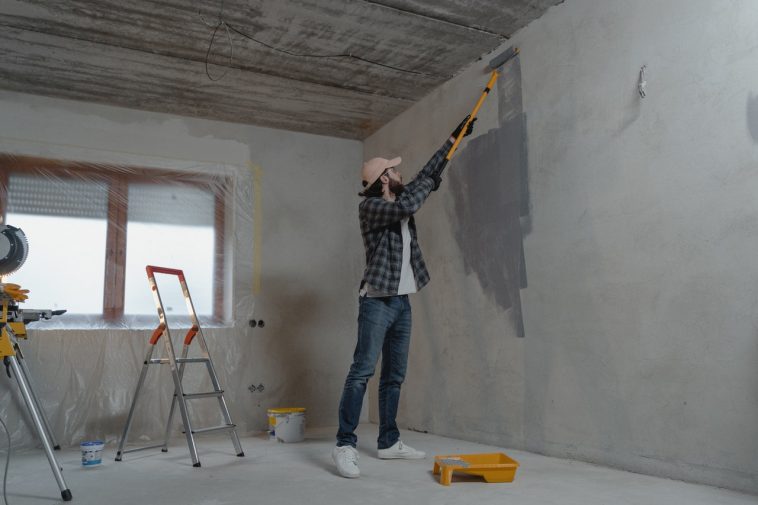Epoxy isn’t too difficult to handle, but that doesn’t mean there aren’t any chances of mistakes. Things could go wrong, especially in the case of DIYs, and it is applicable for both amateurs and professionals.

Repairing epoxy mistakes isn’t difficult if you have proper guidance and the right set of materials. Also, you should be ready for some extra work. You need to keep the basic factors in mind to ensure a perfect finished product.
In this article, we have covered all the major aspects of DIY epoxy countertops so that you can complete your project in the best possible manner. However, if epoxy is what you prefer for your kitchen or bathroom countertop, then it’s best to let the professionals do the job.
You don’t want to be the one with a story about epoxy countertops gone wrong or the one wondering how to fix epoxy countertop edges once the job is done.
You can read about the pros and cons of epoxy countertops at Caesarstone.
Common Mistakes
Creating epoxy countertops is exciting. So if you are looking forward to a DIY project, you should have detailed knowledge of every step involved in the process. Besides, you should know about the common mistakes made by DIYers and ways to fix them.
Not Maintaining The Right Room Temperature When Pouring Epoxy
The temperature of epoxy, room, and surface are crucial aspects of epoxy countertop installation. The surface and room that is to be resurfaced should be 70 degrees. Any temperature below 70 degrees makes “soft” countertops that aren’t durable.
Hence, it’s important to bring both epoxy and your room to 70-74 degrees 48-72 hours before the epoxy is poured. Most importantly, maintain the right temperature for at least a day or two so that the countertop cures properly.
Incorrect Epoxy Ratio Or Measurement
When it comes to the DIY epoxy countertop, the ideal ratio is 1:1. Getting the correct ratio is important for ensuring a finished and durable surface. It’s best to visit the local stores to collect all the tools and equipment needed for a DIY epoxy countertop project.
Most of the epoxy gallon buckets come with measurement markers so that DIYers can easily measure the material, ensuring the right ratio.
Short Or Less Epoxy Mixing Time
It is one of the common yet significant mistakes the DIYers make, especially those new to this. The process of mixing should be carried up for at least three minutes in a safe epoxy container. Once the epoxy is mixed properly, transfer the material to a secondary container and mix it for another three minutes.
Thus, the mixing time is approximately six minutes. Use a paint stick for the job. Avoid using a drill paddle as it may create bubbles in the epoxy mixture.
Adequate mixing time and bucket switching eliminate the possibilities of unmixed resin. Plus, it also prevents the formation of resin clumps which can never be cured. They also leave a sticky spot. However, if this does happen, it can be treated easily by pouring an epoxy flood coat on the countertop to seal the stickiness.
Improper Surface Preparation
Whether you choose concrete, laminate, or granite for epoxy countertop surface preparation is important. The extra preparation ensures a glossy and smooth finished product. If you’ll be using tile, filling in the grout lines is crucial for creating a smooth surface for the countertop. In addition, it is recommended to use clear epoxy for the skim coat.
One-quarter of epoxy covers up to 50 square feet; the product can be applied using a squeegee. A skim coat can be applied in six hours to make the surface ready for a flood coat.
For concrete, wood, and other porous surfaces, it’s best to seal the surface and remove the air pockets, if any. Epoxy can’t travel through them, and as a result, bubbles are created in the countertop. Applying one to two skim coats can quickly sort this problem.
Miscalculating The Amount Of Epoxy Needed For The Project
A gallon of epoxy can cover around 20 square feet while creating a 1/9-inch thickness. At this thickness, epoxy tries to self-level. However, spreading it thinner than this causes divots (fish eyes) on the surface where it’s poured.
Hence, DIYers should be careful when measuring out the square foot when resurfacing. In addition, it is recommended to order enough epoxy so that you don’t run short of the material when creating a countertop.
You should have enough epoxy for both the color base and a clear coat. In case if there are divots in the countertop, you will have the option of re-coating by running the clear epoxy for filling the imperfections.
Uneven Finish And Improper Curing Of Epoxy
Nearly every variety of epoxy resins available on the market are self-leveling. So if the one you buy fails to level out properly, there is a large possibility that you may be using an inadequate quantity. Proper curing of epoxy is essential to achieve an even and smooth surface level.
Fortunately, there are rules to fix uneven finish using epoxy.
Increase the epoxy quantity than you would usually need to ensure that the surface is completely covered. If your epoxy has cured nicely, you’ll have to sand down the countertop surface followed by a second coat.
It allows the next layer to be adequately bonded. But if the surface isn’t cured fully within 12 hours, you must apply a second coat over it. Proper curing provides a uniform finish to the surface.
Endnote
As we said, you don’t want to be the one telling your story of epoxy countertops gone wrong. Therefore, if you choose to take on an epoxy project yourself, ensure you follow the correct procedures.
Make sure to choose a well-ventilated room and use proper protective gear such as eye protection and gloves when working with epoxy. Additionally, maintain a standard humidity level and temperature when working with epoxy. The same is important when curing epoxy countertops.
You can end up making some unique countertops with DIY epoxy projects, given the steps followed for the procedure are followed properly. Collect all the necessary details about epoxy and the right ways of handling it before starting the project. You may end up making a masterpiece with the right set of information and tools.




